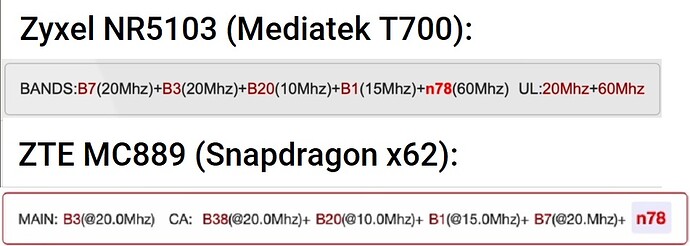Semsem, what you are saying are the same reports I see all over the web and the reasons which forces me to be very careful.
Unfortunately I have to confirm such statement:
And yes, such routers are even cheaper. I honestly asked myself multiple times if I should buy one of such routers and just enable only the modem part.
And this is why in the thread I opened here, the firmware status is one of the things I asked. This behaviour is well known.
They keep CA combinations for RM520N-EU secret and hidden due to what they call “strategy”.
So, I’m wondering how a customer can choose between models when details needed for comparisons are not even exposed.
So, as of now, basically, the only solution I found is what people has done here: buy -GL and see if works. If not, send it to the trash and buy -EU.
This is what already does an old FM350-GL which costs 3 times less (and in any supported band, not just 1 3 7 20 N78).
I plan to place the modem outdoor and Quectel is the only one that works well in pcie mode allowing in this way an ethernet PoE connection. However, I feel like I could achieve the same results with a cheap module like that and save at least $150. Only difference is that the connection has to be made via USB and 3.0 maximum length without signal degradation is 3 meters while I probably need 5 meters and more. The good news is that exists active extension cables and they are cheap.
There’s another thing I have to understand. RM520 max bandwidth is 120Mhz, 200Mhz for the other module. Such combos exceeds 120Mhz, and this to me seems exactly what experienced the guy (although I have not yet understood what he means for “one frequency less”):
Does this translates in reduced speed? I have no idea.
What I’m trying to understand is if an expensive Quectel module can provide better performance, but from what I have read here and elsewhere, not only there are concrete risks that it will perform just like an old cheap module, it could perform even worse (if my assumption on bandwidth is correct).
These modules are advertised as “LTE 5CA + NR 1CA” or “LTE 3CA + NR 2CA” and I’m trying to understand if, RM520N upgraded to the latest firmware, can do this. And if it can, how 120Mhz bandwidth limitation can affect performance.
Semsem, what are you using now?
